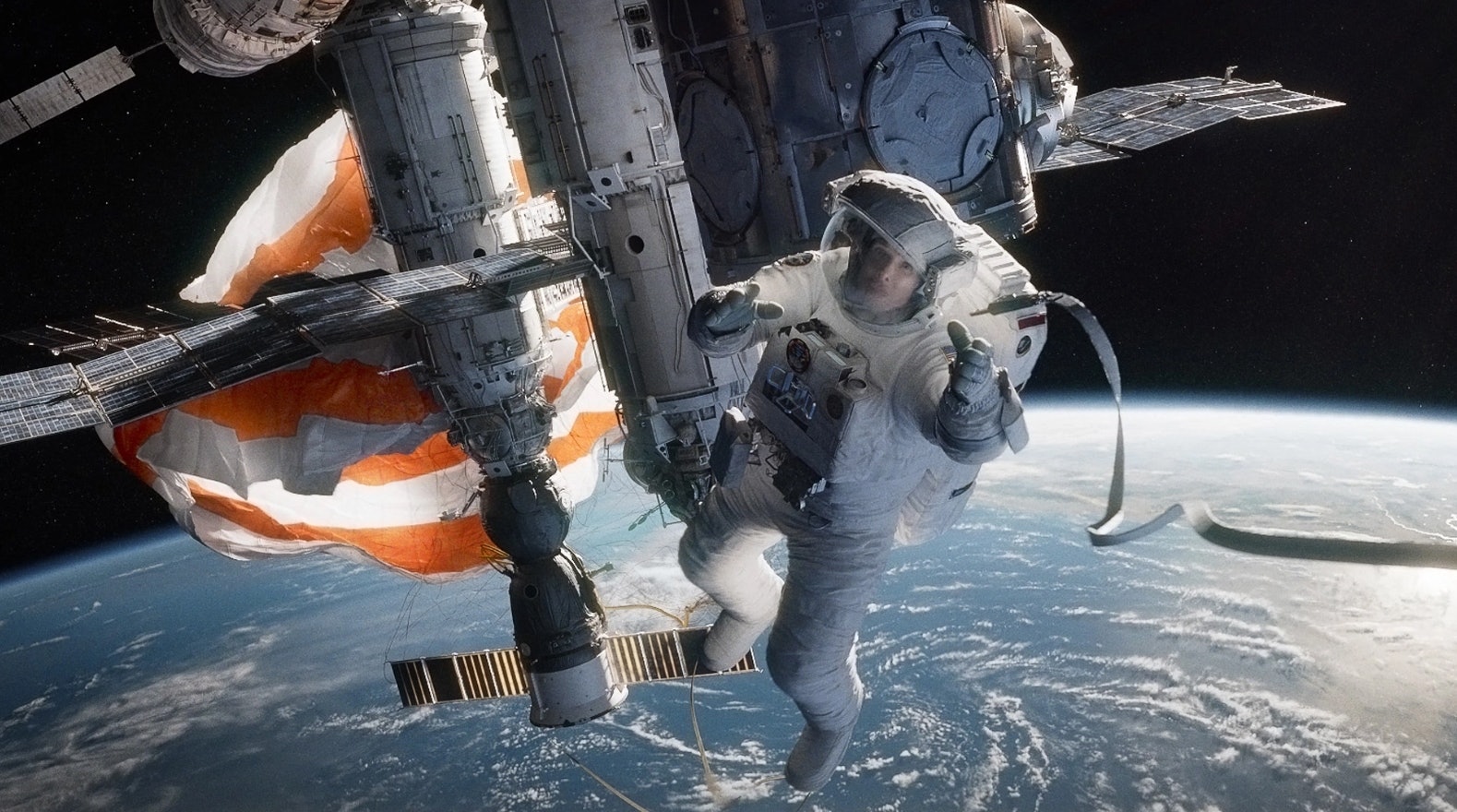
Before The Martian and before For All Mankind, there was Gravity. When it comes to hard science fiction movies that try to focus on the real challenges of contemporary spaceflight, it remains one of the best. Not because all of its space science is 100 percent accurate, but because director Alfonso Cuaron proved that this kind of sci-fi aesthetic can be both accessible and exhilarating. The 2013 film just hit HBO Max, and it’s worth another look for two reasons: it’s an exciting, well-made thriller, and it ushered in a new era of realistic science fiction that barely feels like science fiction at all.
Gravity is an anachronistic “hard” sci-fi full of minor scientific errors. That said, unlike some NASA-centric movies before it (see the 2000 film Space Cowboys, or rather, don’t), Cuaron did as much homework as possible to get the science of the movie right. “In the frame of the fiction, we wanted to be as respectful and accurate as possible,” Cuaron said in 2013. But he also pointed out that Gravity was “not a documentary,” but rather “a piece of fiction.”
As the title suggests, the movie is about gravity, specifically the effects of freefall while in various orbits around the Earth. Dr. Ryan Stone (Sandra Bullock) is working on the Hubble Space Telescope when disaster strikes: debris hits her shuttle, resulting in the death of her colleague, Kowalski (George Clooney). The film then follows Dr. Stone’s fight for survival, which finds her visiting the ISS and the Chinese space lab, Tiangong-1. Getting into the specifics of her journey would ruin what makes Gravity great: it’s a beautiful space thriller about one woman figuring out how to get to the next thing that keeps her alive. Bullock is wonderful, and even though George Clooney puts in a very Clooney performance, his role provides the foundation for where the movie has to go.
Naysayers will point out that Stone’s flight from different points in orbit is exactly what breaks the reality of the film. In real life, Tiangong-1, the ISS, and Hubble were all in different orbits, meaning the ways in which Stone moves between them are mostly nonsense. But that’s okay; Gravity is science fiction, and considering all the other ways in which it depicts space travel accurately, the film is still endlessly watchable.
The reason it’s so watchable is that Cuaron balances the beauty of space with the utter terror of being stranded in it. The tension between those two extremes makes Gravity a unique film that has few peers, and that had even fewer upon release. Although hard sci-fi fans love to point to The Martian, its dialogue has aged poorly, and all the accurate space physics don’t make it an inherently more likable or uplifting story. When it comes to space survival stories, we have to care about the characters as much as we have to believe in the scenario itself.

The spiritual successor to Gravity, at least when it comes to nail-biting NASA-centric space drama, is the Apple TV+ series For All Mankind. Although it takes place in an alternate timeline where the Soviets won the space race, the series takes great pains to depict space travel, and space hazards, accurately. In its Season 1 finale, astronaut Ellen Wilson (Jodi Balfour) heroically catches a fuel tank while in freefall outside an Apollo capsule. It’s the kind of exciting, space-centric conflict that tends to define For All Mankind, but if you squint, it feels very akin to Gravity, both visually and emotionally.
Imagining what space travel might be like in the distant future is, in many ways, much easier for science fiction than depicting what could happen right now. Real space travel lacks any sound, there are no pew-pew lasers, and the hazards involve splitting hairs. Dramatizing those details can be tricky. But Gravity proved that it can be done on a visually grandiose scale with a story that feels small and intimate. The trend of realistic-ish, NASA-centric sci-fi continues today, a fact Gravity almost certainly had something to do with.
Gravity is streaming on HBO Max.







